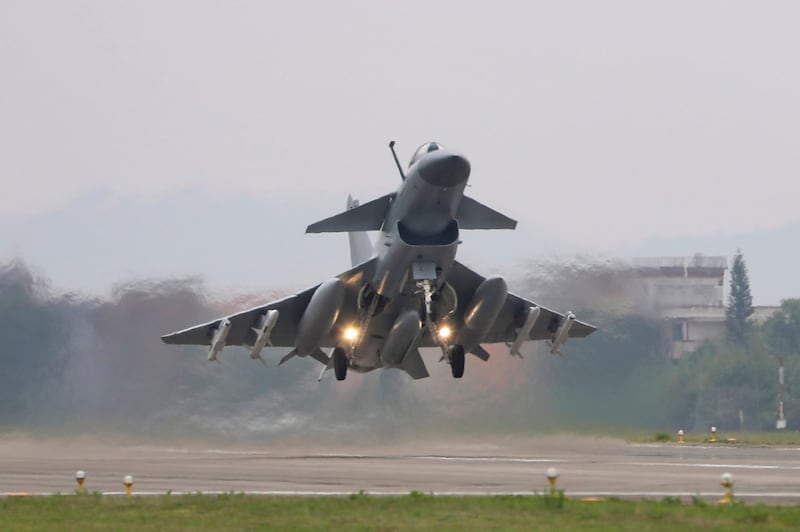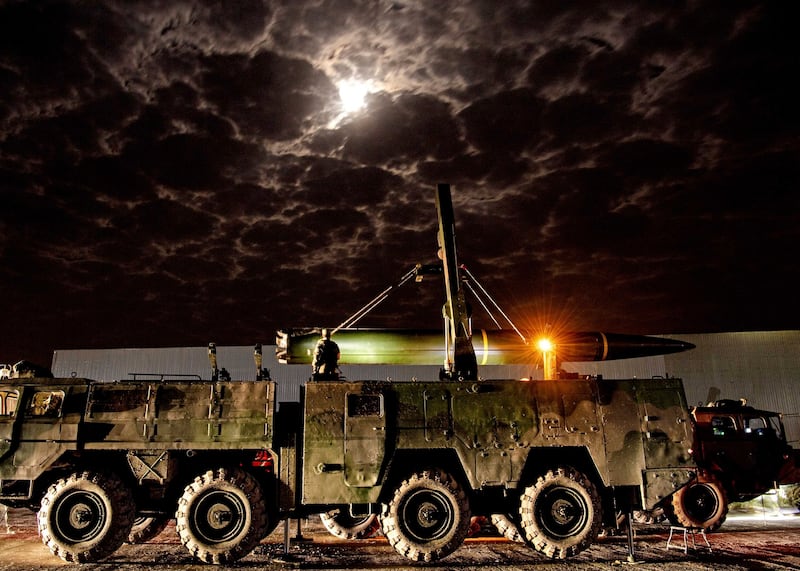Taiwan’s minister of national defense and military analysts are calling recent Chinese military drills “abnormal” and “out of control” amid reports that civilian ferries are being harnessed to carry out beach landing drills on the Chinese side of the Taiwan Strait.
Taiwan is concerned that China’s People’s Liberation Army (PLA) is using increasingly provocative tactics to habituate Taiwan – and its immediate de facto allies, the United States and Japan – into a militarily fractious routine.
On Friday last week, Taiwan Minister of National Defense Chiu Kuo-cheng told reporters at the legislature in Taipei that Chinese military movements around Taiwan were “abnormal.”
“Our initial analysis is that they are doing joint drills in September, including land, sea, air and amphibious,” Chiu said, responding to questions about a rise in Chinese military activity around the nation involving dozens of warplanes, drones, bombers and warships.
Chieh Chung, a military researcher at Taiwan's National Policy Foundation think tank, concurred, telling Radio Free Asia, “From September 11-15, the PLA mobilized three major fleets in the Western Pacific, with a total of 17 surface ships (including the Shandong aircraft carrier strike group) to conduct large-scale confrontational exercises.”
“That’s not like previous exercises in past years. It’s indeed unusual,” Chieh said.

Meanwhile, the English-language Taiwan News reported civilian ferries were carrying out "undetermined, but likely non-commercial" operations along China's east coast.
The six roll-on roll-off (RoRo) ferries associated with the PLA were seen on Sunday conducting drills on Chinese beaches in the Taiwan Strait, at Xiamen, a city in Fujian Province directly opposite Taiwan, the report said, drawing on a series of posts on X, formerly known as Twitter.
The source, Tom Shugart, is an adjunct senior fellow with the Defense Program at the Center for a New American Security.
Attempts by RFA to reach Shugart were not successful, but sources said his information was normally reliable.
Analyst Chieh Chung said he couldn’t verify Shugart’s claims, but added that in exercises conducted at Dacheng Bay, Fujian, last year and the year before, China mobilized civilian semi-submersible ships and RoRo cargo ships for “dock-less unloading” drills.
“Dacheng Bay is the PLA's amphibious landing training base,” Chieh said. “Every year from July to September, many PLA units conduct exercises there. But he added: “The ‘Eight Transport Group (Strategic Sea Transport 8th Squadron)’ mentioned in the news [Shugart’s tweets] does indeed exist and is indeed part of the Bo Hai Ferry Group,” he said.
Ben Lewis, an independent defense analyst based in Washington D.C., said “Multiple Bo Hai ferries have been pulled off their normal routes, but I think the only thing about the recent drills that is unnormal is the fact that the PLA hasn’t bragged about them through its propaganda outlets.”
New normal
Michael Mazza, a non-resident Asia-Pacific defense analyst with the American Enterprise Institute (AEI), describes “the new normal of PLA operations around Taiwan, which can arguably be dated to the Pelosi visit, as one of high numbers, high frequency and high intensity.”
Then-U.S. House Speaker Nancy Pelosi incurred China's wrath in Aug. 2022 by visiting Taiwan, which China claims as sovereign territory.
He added, “The new normal also seems to be one in which there is no accepted status quo and no obvious limiting principle. China will ramp up and ramp down as it wishes.”
But Mazza also said that he does not think the recent exercises “suggest an imminent use of force against Taiwan.”
Rather, he said, it seems more likely that the PLA is speeding up training and shaping operations ahead of Xi Jinping’s 2027 “readiness” deadline.
China’s President Xi Jinping has announced publicly that he wants China to be ready, should Taiwan not come to the table, to invade the de facto nation fortress by 2027, despite repeated U.S. statements that such a move would be unacceptable.

Washington-based Lewis is similarly unconcerned that China is planning an imminent move on Taiwan.
“August-October is one of the PLA’s training seasons, so I’m not concerned that they are doing anything out of the ordinary. Different, maybe, but not out of control.”
However, he added, while “the PRC is generally risk-averse … the more they increase their military activity region-wide, the higher the risk of a miscalculation.”
Says Mazza, on the question of possible red lines the PLA might inadvertently cross in its increasing adventurism, "China's installation of a barrier at Scarborough Shoal last week may have been such a red line in the South China Sea – a seemingly minor escalation that was too much for the Philippines to bear."
Lewis said, “The PRC is generally risk-averse, but the more they increase their military activity region-wide, the higher the risk of a miscalculation,” referring to the People’s Republic of China, the official name of China.
“Beijing uses this risk as a weapon in its engagements with other countries, including Taiwan. I also think, however, that the PRC is highly aware of the red-lines of its targets, specifically Washington and Tokyo.
“As much as they may escalate a situation, I think they want to avoid an escalation spiral as much as anyone else.”
Speaking on the Scarborough Shoal incident and the reaction of the Philippines, Mazza said, "It is difficult to predict what an equivalent would be in the Taiwan Strait, but the lesson is this: China is far too confident that it can control escalation and that it can count on the restraint of its rivals and adversaries.
“That confidence may be misplaced,” Mazza says.
Edited by Mike Firn and Elaine Chan.
